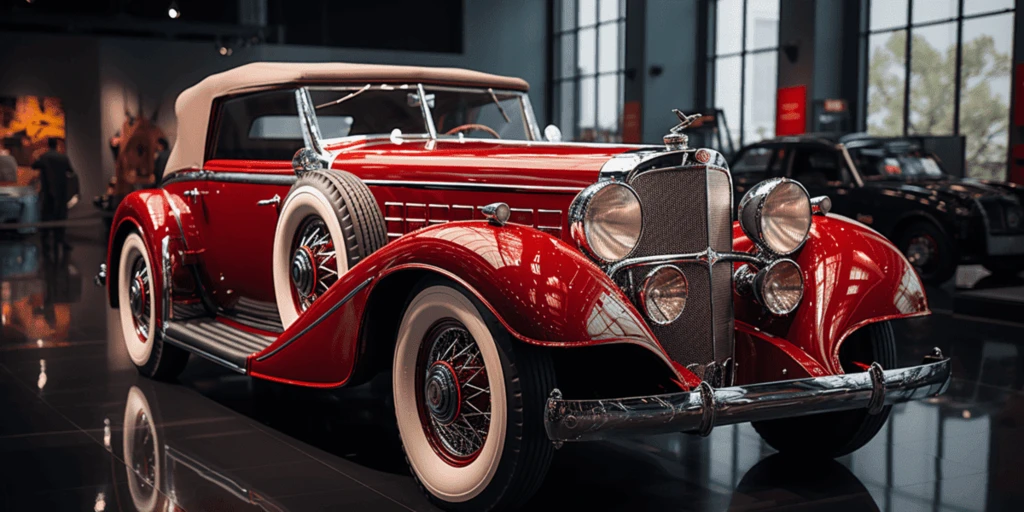When it comes to cars, the word iconic can mean different things for different people. Some might interpret it as meaning powerful engines or irresistibly curvaceous chrome finishes; for others it might mean both practicality and stylishness in their vehicle.
Claiming something as a classic has the risk of making it sacred writ and devoid of historical context. Timeless works provide inspiration for contemporary writers to aim toward.
Ford Mustang
Ford executive Lee Iacocca recognized a changing market in the early 1960s when baby boomers began driving cars, and began his research. According to his observations, these new consumers desired sporty vehicles with bucket seats and powerful engines.
Iacocca’s dream came to fruition when the Mustang debuted in 1964, as dealerships sold 22,000 Mustangs on its inaugural day alone and over one million had been produced since March 1966.
Over time, the Mustang has evolved, yet remains one of the most beloved vehicles ever. Today’s model offers drivers both powerful V-8 engines and efficient four-cylinder units for optimal driving pleasure.
Volkswagen Beetle
The Beetle was an instant classic that hasn’t quite been replicated since. With its modest looks and counterculture charm, its modest appearance was ideal for an economy car and managed to capture many hearts across America.
At an accessible price point, this vehicle was affordable enough for families to purchase using a savings book that would be stamped each week until its cost had been covered in full. New innovations included McPherson front suspension and hydraulic steering damper.
Doyle, Dane and Bernbach cemented advertising history with their groundbreaking Beetle campaign “Think Small,” widely recognized as one of the greatest ever seen.
Plymouth Savoy Wagon
Unfamous cars can do more than draw attention; they can rewrite the rule book and inspire future entrepreneurs, designers and engineers to think outside of the box.
Nostalgic for your family’s Woodie station wagon or an admirer of Richard Petty and NASCAR racing history? A visit to Cartersville’s new world-class museum will bring automotive history alive! There you’ll see an authentic Plymouth Savoy NASCAR tribute car emblazoned with sponsorship branding and Petty’s signature on its driver-side front fender fender!
BMC Mini
The Mini is the first sub-1.0-litre car to achieve three seemingly impossible goals: seating four people comfortably, exceeding 70 miles per hour and getting 50 miles to the gallon. It was conceptualised by Alvis engineer Alec Issigonis after being brought back into BMC by Lord with instructions to design technologically advanced family cars that could compete with American bubble cars emerging at that time.
Early adopters were delighted to find Issigonis’ car both enjoyable and cost-effective, prompting Abingdon’s Competition Department to prepare cars specifically for motorsport competition – with significant success at Monte Carlo races as a result.
Chevrolet Corvette
Chevy made their Corvette truly its own in its fifth generation (C5) by unveiling an entirely new design and offering it both as coupe and targa convertible models.
After its debut at General Motor’s 1953 Motorama show in NYC, the Corvette initially didn’t find much success. But following a redesign in 1956 with Zora Arkus-Duntov providing considerable assistance and offering more cost-efficient engines options, sales began to pick up significantly.
The fifth generation Corvette, introduced in 1996, is widely considered the finest example. It boasted an angular design which still looks contemporary today.
Jeep Willys
The 2020 Jeep Wrangler Willys is an exceptional combination of heavy-duty Trail Rated components and vintage Jeep brand styling, available now from our dealership on Miracle Mile.
Willys-Overland received a contract from the U.S. Army in 1941 to produce over 300,000 military vehicles known as Willys MB (later CJ-2A). When World War II concluded, Willys switched its focus from military production to civilian production by marketing their versatile go-anywhere vehicle as the Civilian Jeep; its round rear corners, exterior handles for manual extrication from sticky terrain, and other features were designed specifically to help navigate uncharted territory safely.





